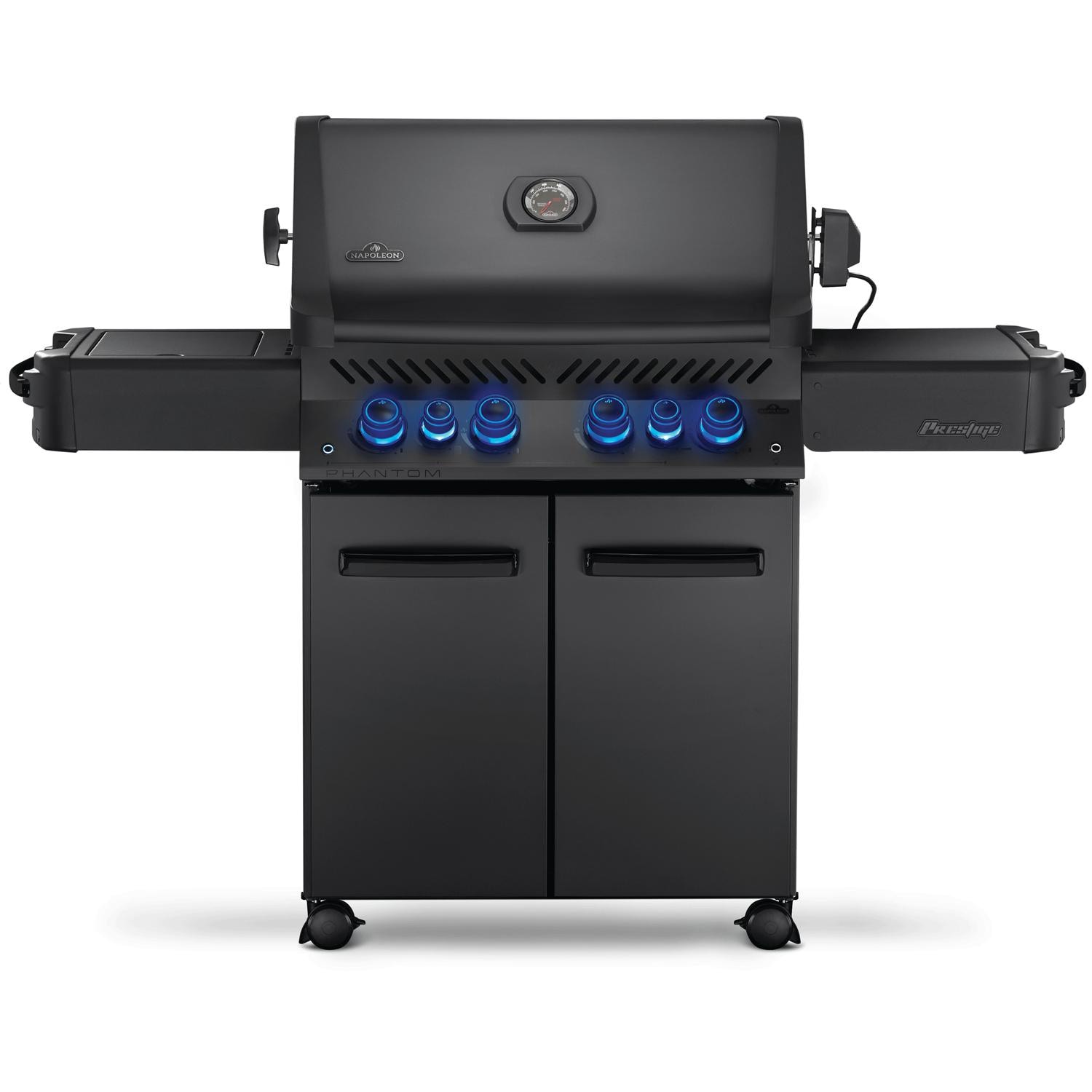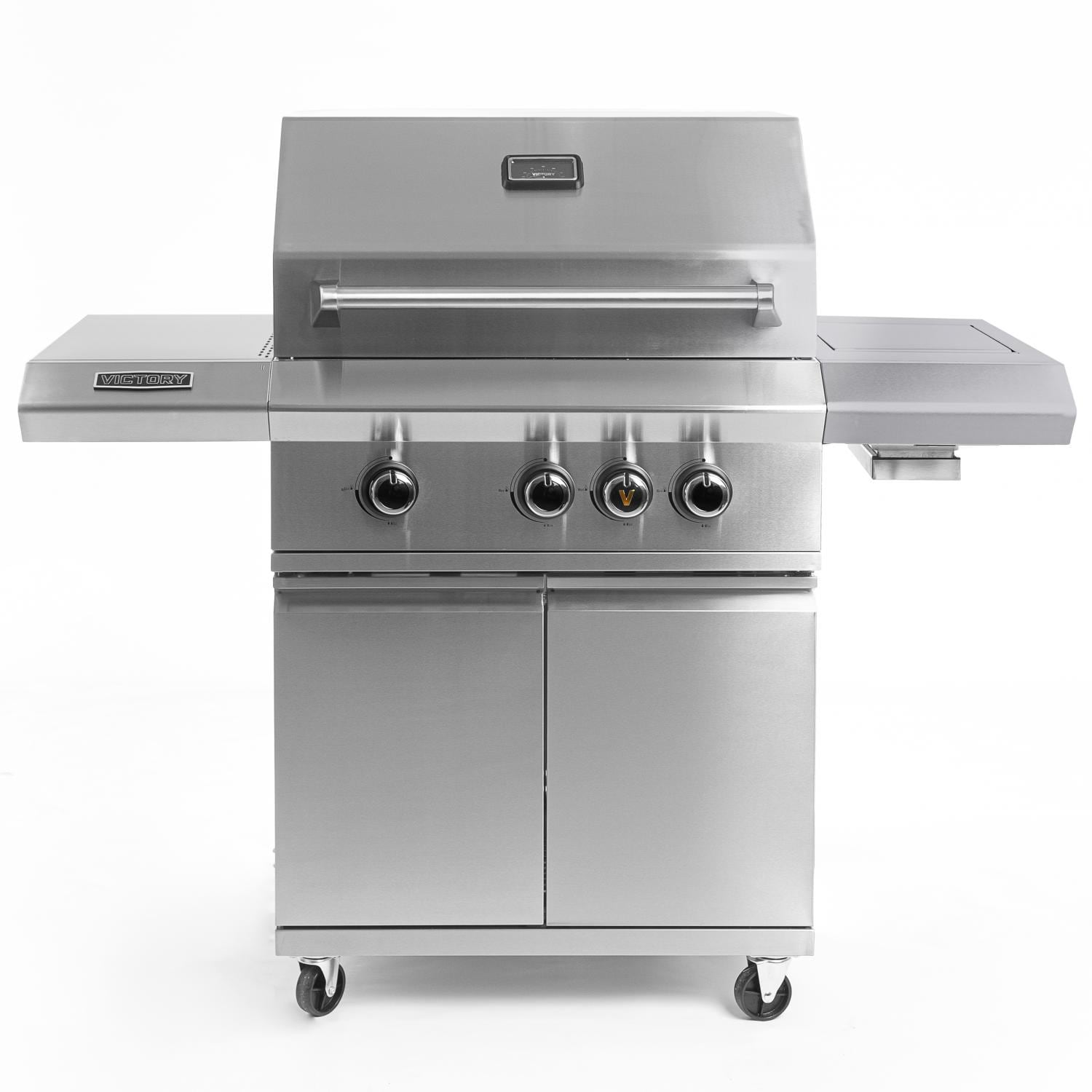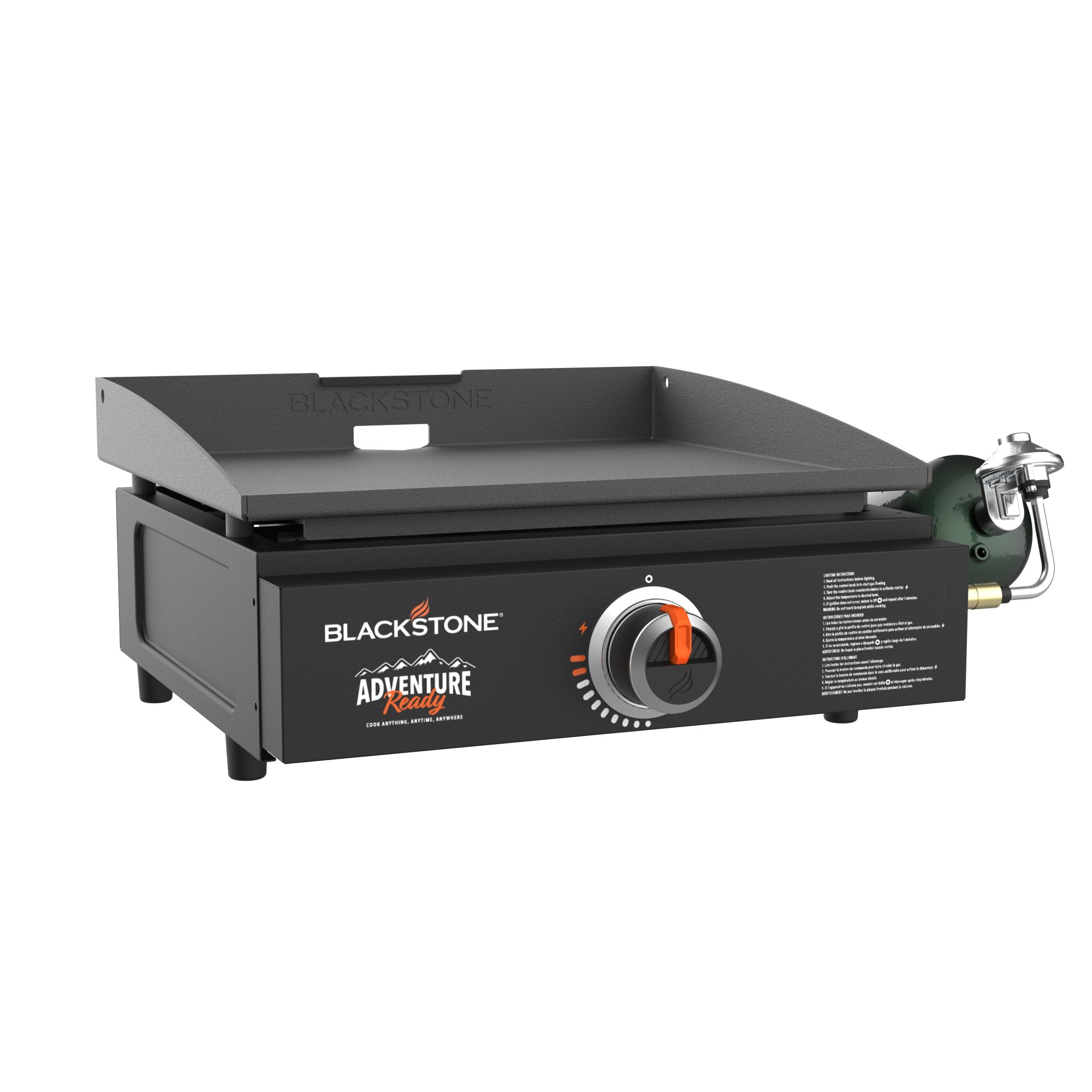Napoleon Phantom Prestige 500 Propane Gas Grill with Infrared Rear Burner, Infrared Side Burner, & Rotisserie Kit – Matte Black – P500RSIBPMK-3-PHM
Multifunctional warming rack designed with cutouts for grilling wings and appetizers. SafetyGlow Night Light illuminated controls. Rear infrared rotisserie burner and rotisserie kit allows you to slow roast food with restaurant quality results. High heat infrared side burner allows you to sear just like a steakhouse while other dishes cook on the grill.
- Grill in style with premium Phantom matte black finished surfaces
- Multifunctional warming rack designed with cutouts for grilling wings and appetizers
- SafetyGlow Night Light illuminated controls
- Rear infrared rotisserie burner and rotisserie kit allows you to slow roast food with restaurant quality results
- High heat infrared side burner allows you to sear just like a steakhouse while other dishes cook on the grill
The Napoleon Phantom Prestige 500 blends quality and performance into one package and features edgy styling with luxurious matte black finishes. This freestanding propane gas grill has four stainless steel tube burners that provide up to 48,000 BTUs of cooking power. The grill has cast stainless steel cooking grates with 500 square inches of main cooking area and 240 square inches across the stainless steel multifunctional warming rack for a total of 740 square inches of cooking area. The Napoleon Jetfire ignition with crossover lighting starts each burner individually for a reliable start up every time and allows you to light all the burners at the same time. The cast stainless steel wave cooking grids create the trademark Napoleon sear lines and allow for better heat retention. The dual level, stainless steel, sear plates vaporize drippings, control flare ups and keep your food moist. The multifunctional warming rack is designed with special cutouts for grilling wings and appetizers. This Phantom Prestige 500 also has a 18,000 BTU rear infrared burner and rotisserie kit for roasting and a 14,000 BTU infrared side burner for searing meats. The hood features an Accu-Probe temperature gauge, cast aluminum end caps and retains heat for oven-like performance. The SafetyGlow control knobs turn from blue to red when a burner is in use. Clean up is a cinch with the full width removable drip pan. The grill cart is made of durable, rust and corrosion resistant black steel, features folding shelves with integrated utensil holders, double doors for storage and easy roll locking casters for moving the grill around. This Napoleon grill is manufactured in China.
Legal disclaimers and warnings
Product packaging, owners’ manuals, installation instructions, and/or operating instructions may include more information than what is shown on our website. The content on our site is intended to be used for reference purposes only. Please fully read all included manuals and documentation before installing or using this product. WARNING for California residents: this product may contain chemical(s) known to the state of California to cause birth defects, cancer, or other reproductive harm.
Additional information
| Width | 66.25" |
|---|---|
| Depth | 26.5" |
| Height | 50.25" |
| Weight | 197 lbs |
| Number Of Main Burners | 4 Burners |
| Grilling Surface BTUs | 48000 |
| Cooking Grid Dimensions | 28 X 17 3/4" |
| Main Grilling Area | 500 Sq. Inches |
| Secondary Grilling Area | 240 Sq. Inches |
| Total Grilling Area | 740 Sq. Inches |
| Burger Count | 22 |
| Rotisserie Burner BTUs | 18000 |
| Total Side Burner BTUs | 14000 |






by John
Love this grill. First the negatives. I thought I would be able to roll this but its heavy so I keep it in one place. Thats all the negatives. I love everything else. It’s so easy my wife can use it and I feel safe. But those safety features it had are what lured me in. The reigniting burners the glowing red knobs telling you its still on. I’ve only used it once so far but I’m very happy and I know I’m going to have some awesome BBQs with this!
by Josh
Amazing grill experience. Seamless set up. Love it.
by Syalc
This bbq: Is well built (high end stainless), delivers high even heat, and looks great. My only complaint (Good instead of excellent) is one of the side panels passed inspection without paint/powder coat (Small area, see photo), leaving what appears to be raw metal. Thanks.
by Tim
Fun grill to cook on. Heats up quickly and has no troubles getting hot! Grill cooks very evenly while maintaining desired temps. Plenty of room to cook for 6-8 people. I have all the accessories for this grill and use them weekly. Its lacking an internal grilling light, for this price point it think it would be expected. The right side tray that is collapsible doesn’t lock in place very well. Storage below could be nice, but some weirdo but a support brace right in the middle of the area next to the tank, limiting the use in this space. Be very careful putting accessories, plates and such on the side shelves as the finish scratches and get nicks vey easliy. Shipped quickly and was easy to assemble. Overall a solid grill and a pleasant buy.